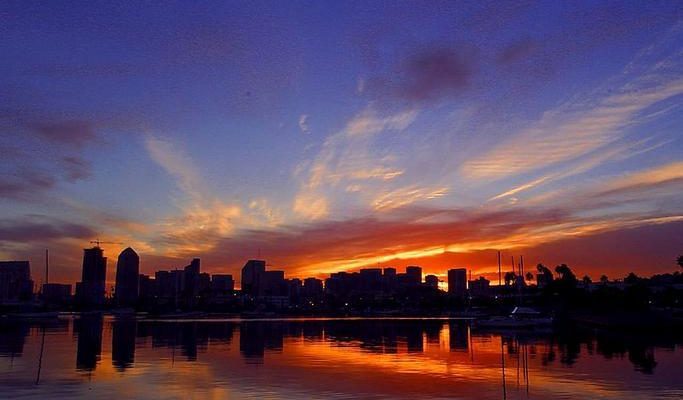Sun rises in the east and sets in the west. We have heard and read this numerous times, but you would be surprised to learn that this is only half the truth.
In actuality, the Sun doesn’t rise or set. It’s the Earth that rotates and the spinning is towards the east, causing the illusion of the sun rising from the horizon.
Since earth observers are in a constant rotating reference frame, we feel that the sun is rising/setting.
Sun at equinoxes
As per scientific reports, sunrise in due east and sunset in due west happens only twice a year: Fall and spring equinoxes. While the spring equinox happens anywhere between March 19, 20, and 21, the fall one takes place in September, between 21 and 24.
At the equinoxes, the sun is directly above the earth’s equator, and people experience 12-hour (roughly) long days and nights each.
Except for these two days, the sun rises south or north of due east and sets south or north due west on the rest of the days of the year.
Sun at the solstices
It’s said that the Sun’s setting and rising points change marginally each day.
Like, during the summer solstice (which falls on June 21), sunrise happens at the farthest northeast and sunset occurs at the farthest northwest. In the Northern Hemisphere, this is the longest day.
After that, the sunrise takes place further south bit by bit.
When the winter solstice (on December 21/22 in the Northern Hemisphere and June 20/21 in the Southern part) sets in, the sunrises and sunsets get longer. This is because the Sun is nearer the Earth during December compared to its position in June.
Sunrise/set and its color
When the Sun rises or sets, you must have noticed an orange-reddish hue across the sky. This happens because of scattering. In our atmosphere, light can change directions due to small particles, molecules, or droplets.
During sunrise and sunset, the Sun is close to the horizon. And more sunlight traverses through the atmosphere than when the Sun is up in the sky. So, colors such as violets and blues having shorter wavelengths scatter out. And, the longer wavelength colors like red, yellow, and orange remain.
As a result, sunsets and sunrises have that beautiful orange-reddish shade.
Arctic circle and midnight sun
During summer, the northern region of the Arctic circle and the southern portion of the Antarctic circle witness a natural occurrence called the midnight sun. This happens during the summer solstice when, in 24 hours, the sun doesn’t go below the horizon.
The midnight sun takes place when the axis of the earth inclines towards the sun during summer and is away from it in the winter months. This means the North and South poles get the Sun’s rays for half a year each. Specifically, the midnight sun happens in the North Pole from March to September.
Countries/territories that experience midnight Sun includes Iceland, Norway, Finland, Denmark (Greenland), Sweden, Russia, and Alaska.
The Russian city of Murmansk, which is the largest in the north Arctic, gets midnight Sun for 62 days starting May 22.
From April 19 till August 23, there’s no sunset in the Norwegian archipelago Svalbard, Europe’s northernmost inhabited region.
Arctic circle and Polar Night
Polar Night is the opposite phenomenon of the midnight Sun. In this, nighttime lasts for over 24 hours in the southern- and northernmost places of the earth.
During Polar night, it’s night in the Antarctic circle while the Arctic region gets the day.
Sunrise in different regions
Though Japan is reportedly the “land of the rising sun,” it is not where the sun shows up first. That honor has to be bestowed upon the North of Gisborne, New Zealand. The Kiwi city witnesses the first sunrise in the world each day.
If you travel to Opotiki and Te Urewera National Park, which are around 2 hours away from Gisborne, you will be able to see the world’s first sunrise.
To note, residents of Kiribati Islands, South Pacific, welcome a new day before anyone else. They are the first ones to ring in the new year across the globe, but unfortunately, are not able to see the first sunrise.
Meanwhile, the territory of American Samoa receives the last sunrise in the world.
Fun facts about the sun
Blue hour: When the sun is about to come up or has just set, it dons a deep blue color. This is known as the blue hour. Photographers love training their cameras on the moon on a landscape during this time because the images have a natural blue tint in them.
Double sunset: As the name suggests, in this astro-geographical phenomenon, the sun appears to set two times in the same evening when viewed from a specific point. You can see this and also two sunrises in Orasso, located near the border of Italy-Switzerland.
Solstices: Sunsets are the longest at the time of solstices.



